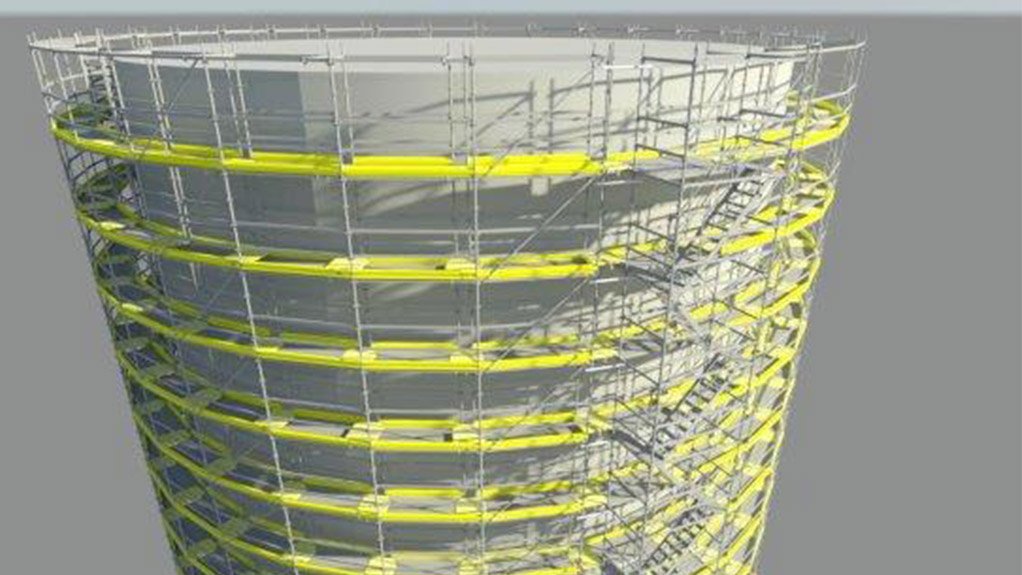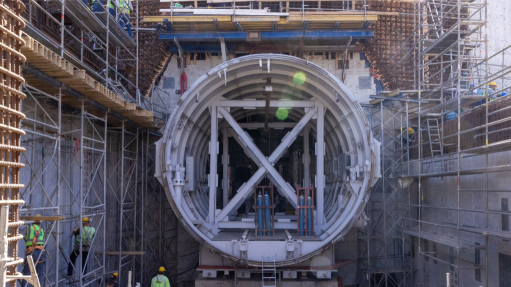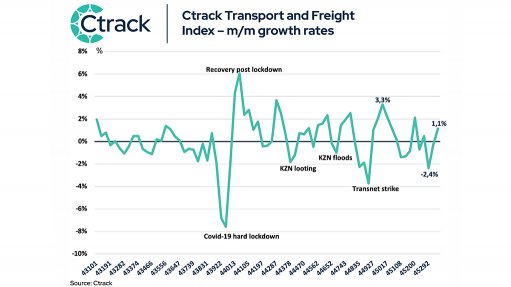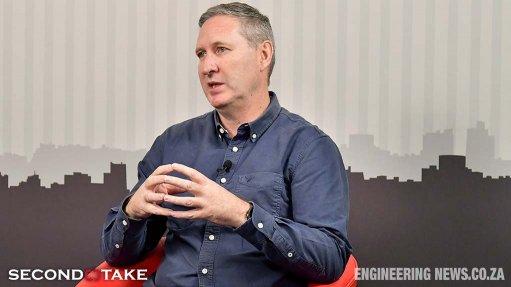PERI South Africa builds on its formwork systems with BIM offering
This article has been supplied as a media statement and is not written by Creamer Media. It may be available only for a limited time on this website.
The construction industry is in need of change so as to boost productivity, minimise project overruns, and reduce rework due to lagging or slow information flow. As a supplier of a key service to main and sub-contractors, the formwork sector is well-positioned to assist with achieving such savings and improved production levels by leveraging the advantages that Building Information Modelling (BIM) can offer.
In this environment, formwork systems lend themselves well to be presented as 3D models within a 3D space. This is why PERI South Africa is paving the way to collaborate with architects and engineers in the initial design phase of a project to guarantee the most cost-effective and practical solutions for clients. It has launched BIM as part of its service offering over the last 18 months. “We are trying hard to promote it,” Riaan Brits, engineering director for Sub-Saharan Africa, comments.
“We are also in the process of educating our clients to deploy BIM as a risk-mitigation factor, as well as a tool to have the relevant information on hand in terms of a digital device such as a tablet, and thus improving the way that contractors install temporary works,” Brits explains.
“Therefore, in that sense we are very active in the construction space. We do, however, currently advise architects and engineers when they design buildings about constructability. For example, we could advise a construction company about how to build a lift shaft optimally by ensuring that they construct it better. This is one of the key advantages that the industry can look forward to when it engages with us,” Brits comments.
Everybody within the construction value chain can benefit from adopting the BIM process. “However, people are unsure what the technology is, and what value it can add. Property owners are without doubt the biggest stakeholder, because they receive the real value benefits from actually utilising this integrated system.”
BIM opens up communication lines, and minimises the potential of mistakes. The entire team can work on an integrated model, which enables them to be involved in the upfront planning and execution of a project.
“This means that we can supply a better-suited design, especially in terms of constructability, for a project. Therefore, early engagement with the key players in a project will result in in a far more cost-efficient building process, and throughout the building’s lifecycle,” Brits elaborates.
All stakeholders receive clear communication, real-time access to data and information, and query assistance. The communication process is directed to the relevant person working on a project, as opposed to a general communications assistant.
The openness of the communication, and the increased usability of the information, is therefore a major advantage. The project information is accessible from a digital device from within a 3D space, which makes it easily accessible, as well as enhancing the level and detail of information provided throughout this process.
An important part of PERI South Africa’s current focus and strategy is to educate the South African construction industry about the benefits of adopting BIM upfront. “People are unsure what BIM is, with some believing it is 3D modelling, while others think it is the automation of the inspection list on-site. Some even believe it is some type of magical tool that is going to alleviate problems.
“I think that the general misconception is the level of information and data, and the integration of the data that can be gathered from the system. It requires the buy-in of all parties involved in the process,” Brits argues.
A common misconception is to regard BIM as standalone software. Instead, it integrates all construction processes, from planning to supply, allowing the entire team to work on a model in real-time, which can be changed, adapted, and managed easily.
“This is not majorly different from how systems are working currently, but now with BIM they are integrated into a central point, where everyone is working on a live model. Therefore, for example, if an architect’s calculations change, the end supplier will be able to see this, and can adapt what needs to be supplied in accordance with the new calculations,” Brits points out.
“PERI South Africa is already doing quite a lot in this regard. I think it is important for us to focus on high-risk factor projects where safety on-site and execution of that is the ultimate goal. BIM needs to be promoted to architects and engineers, as well as end users and property owners, so they really comprehend its impact on the entire value chain, from cost-savings to constructability and safety,” Brits stresses.
Traditionally, architects are approached to design a new structure to guidelines specified by the client. The design work is verified by an engineer, whereafter the development is put out to tender. Contractors tender according to their best cost estimates, and only at this stage of the process is PERI South Africa consulted.
By now the project has been awarded and construction has commenced. “Only then do we begin to get a sense of what the architect and engineer intended, and therefore a number of issues can get overlooked as a result, especially as some items are so expensive to construct,” Brits highlights.
However, BIM allows key suppliers to engage early on with the architects, or even the clients themselves. This allows PERI South Africa to guide and advance the constructability, as well as the on-site processes themselves.
Therefore, the moment a project is realised, and all parties are on board, everybody involved from the early design phase has the knowledge upfront on how things are to be constructed on-site. This allows for a genuine full-spectrum service that is to the benefit of all stakeholders.
The level of integration of BIM in the South African construction industry still has a long way to go, however. State-owned enterprises in Europe and Australia, for example, have put processes in place whereby Level 2 BIM adoption is becoming standard practice. This ensures that these entities obtain all the information necessary, including how to maintain the building once it has been completed, and the location of every element installed.
Therefore, owners have a fully-integrated model, from which they can manage and facilitate a building going forward. “Major car manufacturers are already adopting the BIM process, and are realising the benefits of this. The construction industry as a whole requires a major mindshift in terms of realising that there can be significant time- and cost-savings by adopting the BIM process,” Brits concludes.
Comments
Press Office
Announcements
What's On
Subscribe to improve your user experience...
Option 1 (equivalent of R125 a month):
Receive a weekly copy of Creamer Media's Engineering News & Mining Weekly magazine
(print copy for those in South Africa and e-magazine for those outside of South Africa)
Receive daily email newsletters
Access to full search results
Access archive of magazine back copies
Access to Projects in Progress
Access to ONE Research Report of your choice in PDF format
Option 2 (equivalent of R375 a month):
All benefits from Option 1
PLUS
Access to Creamer Media's Research Channel Africa for ALL Research Reports, in PDF format, on various industrial and mining sectors
including Electricity; Water; Energy Transition; Hydrogen; Roads, Rail and Ports; Coal; Gold; Platinum; Battery Metals; etc.
Already a subscriber?
Forgotten your password?
Receive weekly copy of Creamer Media's Engineering News & Mining Weekly magazine (print copy for those in South Africa and e-magazine for those outside of South Africa)
➕
Recieve daily email newsletters
➕
Access to full search results
➕
Access archive of magazine back copies
➕
Access to Projects in Progress
➕
Access to ONE Research Report of your choice in PDF format
RESEARCH CHANNEL AFRICA
R4500 (equivalent of R375 a month)
SUBSCRIBEAll benefits from Option 1
➕
Access to Creamer Media's Research Channel Africa for ALL Research Reports on various industrial and mining sectors, in PDF format, including on:
Electricity
➕
Water
➕
Energy Transition
➕
Hydrogen
➕
Roads, Rail and Ports
➕
Coal
➕
Gold
➕
Platinum
➕
Battery Metals
➕
etc.
Receive all benefits from Option 1 or Option 2 delivered to numerous people at your company
➕
Multiple User names and Passwords for simultaneous log-ins
➕
Intranet integration access to all in your organisation























